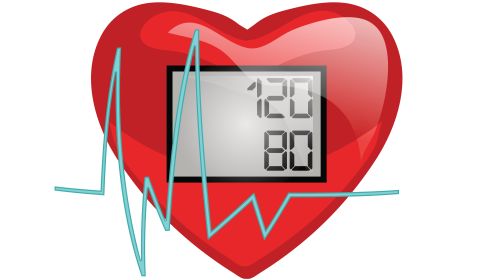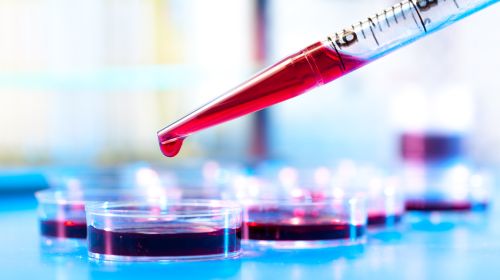The oxygen saturation (O2 saturation) indicates the percentage of red blood pigment (hemoglobin) that is saturated with oxygen. The blood value depends on the partial pressure of oxygen. (pO2) The higher the pressure, the higher the values for oxygen saturation.
- Oxygen saturation is a blood value used to assess lung function.
- © iStock.com/YakobchukOlena
At a glance:
When is oxygen saturation determined?
The oxygen saturation (O2 saturation) is determined as part of a blood gas analysis. This examination is necessary in the case of lung diseases, kidney weakness or heart diseases, among other things. During operations or emergencies, blood oxygen is routinely measured using pulse oximetry.
Measurement of oxygen saturation using pulse oximetry
The O2 saturation is determined by the arterial or venous blood depending on the diagnostic objective.
In operations and in emergency medicine, it is often necessary to monitor the oxygen content not just once, but continuously. This is done using pulse oximetry. A pulse oximeter, a clip with a light source, is attached to the finger or earlobe. Depending on how much hemoglobin is saturated with oxygen, the tissue lets the light through in different frequency ranges. This light is measured with a photo sensor and the blood oxygen value is output via a computer.
When is the blood oxygen in the normal range?
The oxygen saturation is between 94 and 98 percent in the normal range.
With hyperventilation, the oxygen saturation is too high
A value above normal occurs mostly with hyperventilation. If you breathe too deeply and / or too quickly, the body gets more air and thus more oxygen than the organism needs. At the same time, the carbon dioxide concentration in the blood decreases and the pH value increases.
Typical symptoms of acute hyperventilation are shortness of breath and the need to breathe deeply and quickly. Those affected complain of tingling and abnormal sensations in the extremities, hands and lips can cramp. Headache, dizziness, tremors may occur.
Help with hyperventilation
In the case of acute hyperventilation, the person affected should be calmed down and instructed to breathe slowly and consciously. In order to lower the blood oxygen level, the person concerned is allowed to breathe several times into a plastic or paper bag. In this way, he breathes in his own exhaled air, which contains carbon dioxide, the level of carbon dioxide in the blood increases, and O2 saturation decreases.
Causes and symptoms of insufficient oxygen saturation
O2 saturation values that are too low are usually a sign of diseases that impair breathing, such as asthma or chronic lung diseases. The value can also be chronically reduced in the case of heart defects and circulatory disorders. In people at high altitudes, such as mountain climbers, blood oxygen can also be below normal.
If the oxygen saturation in the blood is too low, symptoms such as shortness of breath, chest pain, alternating feelings of heat and cold, and sweating are typical. Trembling, dizziness, concentration problems and perception disorders, such as impaired vision, are also possible symptoms of low blood oxygen. In severe cases, those affected can lose consciousness. Nausea and vomiting can also occur if the oxygen level in the blood is too low.


